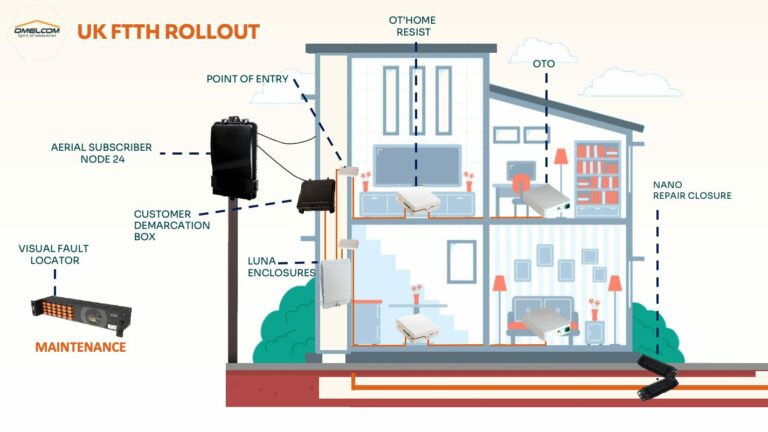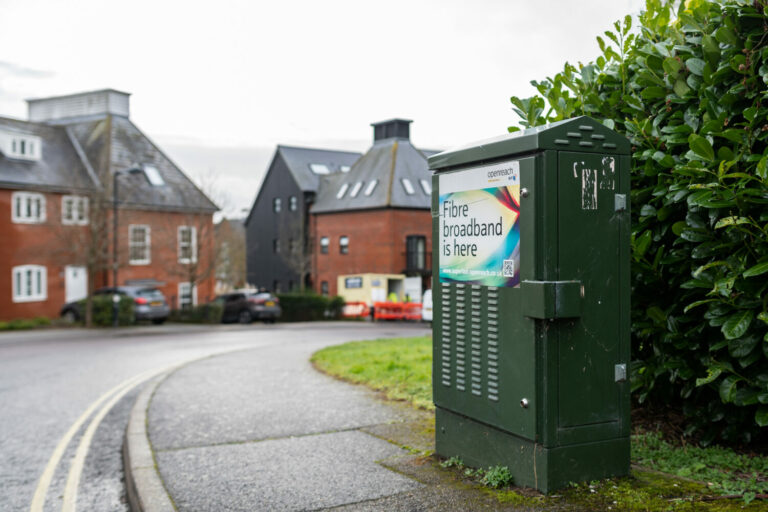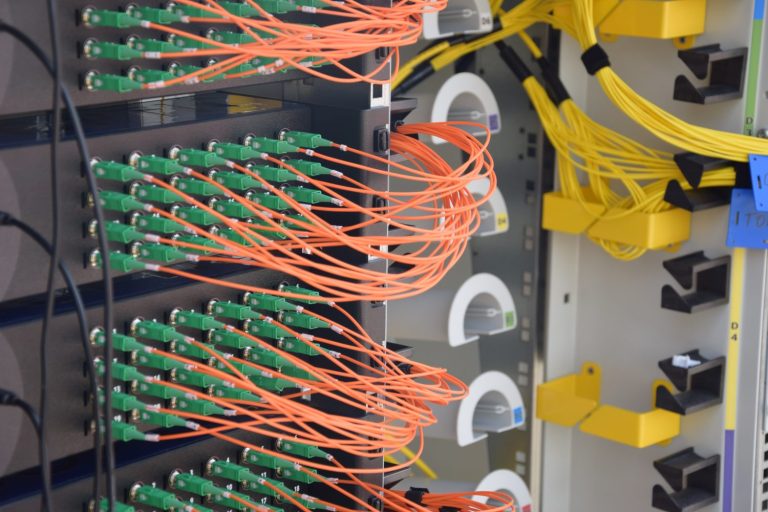Bloc 1/6
The UK fibre market is on a rapid growth path, as shown by the latest FTTH Council Europe forecasts. However, there are a number of significant challenges ahead and the landscape is likely to be significantly different in five years’ time.
Market Growth
As shown in the extract below from the FTTH Council Europe’s “FTTH/B Market Panorama in Europe, Update September 2022”, the UK’s FTTH market has been growing rapidly after a relatively slow start.
The forecast is for continued significant growth. The FTTH Council Europe predict that the number of homes passed will rise from 16.8m in 2023 to 30.7m in 2028. In this time, the number of subscribers will increase from 4.9m to 13.5m.
However, while the forecast penetration rate will grow from 16 to 43%, this is still well below the rate achieved in other European countries. France (95%) and Spain (88%) are obvious comparisons.
Key Drivers
There are two main drivers for growth, other than the very low starting point. (The FTTH Council Europe found that in September 2022, only 11.1% of the UK had FTTH/B subscribers, compared Spain – 73.5% and France – 55.2%.)
1. Project Gigabit
The government’s commitment to achieve fibre broadband coverage to “at least” 85% of UK premises by the end of 2025 and then “nationwide” coverage (c.99%) by around 2030. So far, only £1.2bn (of the planned £5bn) has been released from the budget up until 2024, but more is expected to be unlocked as the industry responds.
In the latest quarterly Winter 2023 update, it was announced that six contracts (worth £164.8m) had been awarded, with a further 14 in procurement with a combined estimated value of £906.7m.
2. Private Investment
There has been a very large investment made in the industry by a number of companies. According to Point Topic, “Investment and expenditure in the independent network sector continued throughout 2022 with an estimated additional £6 billion having been committed to network expansions and operations during the year.”
They forecast that planned CAPEX spend by Altnets until the end of 2030 is over £24.2 billion. In addition, BT Group’s (Openreach) planned investment is £15 billion and Nexfibre’s (a joint venture between Liberty Global, Telefónica and InfraVia Capital Partners) totals £4.5 billion.
Challenges
There are a number of challenges involved in delivering this forecast growth:
1. Homes passed v connections – much of the initial focus in the UK has been on homes passed, but as the commercial reality of generating returns for investors becomes more apparent, there will be an increasing emphasis on subscribers. (The UK has a low penetration rate, as shown above).
2. Overbuild – the stated plans of operators exceed 50m, which is roughly double the number of households. This is already an issue in major conurbations such as London.
3. Consolidation – with over 100 operators, there will inevitably be a major shakedown in the industry over the next few years. It is feasible that the landscape will consist of maybe 3 or 4 majors, a few regional players and a number of local firms.
4. Implications for suppliers – with parallel growth in other markets (including Germany), the supply side is being challenged by extended delivery times and availability of stock
Bloc 1/6









